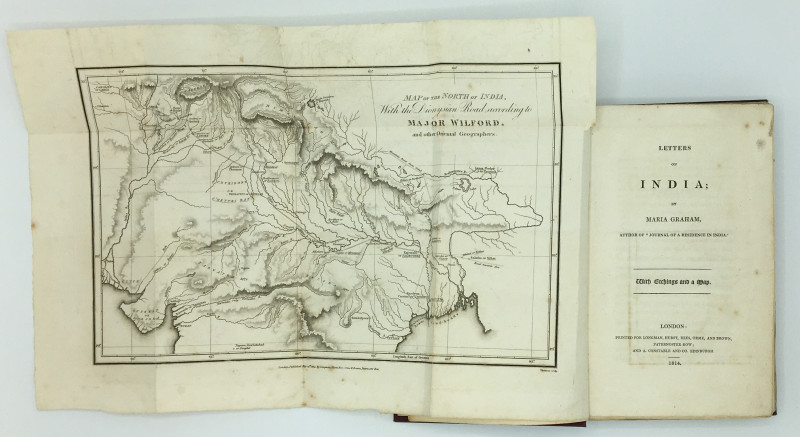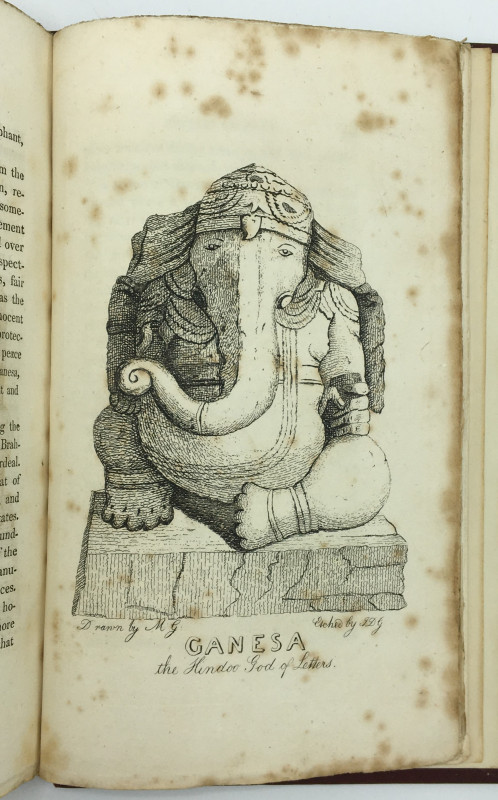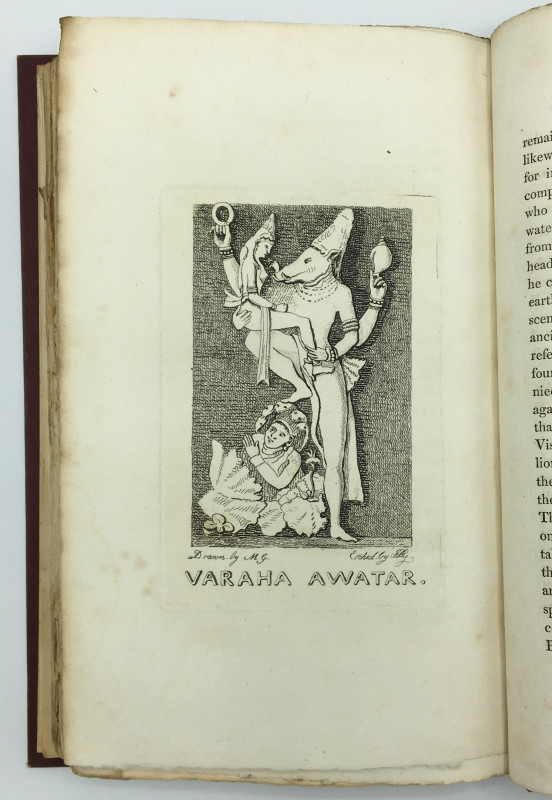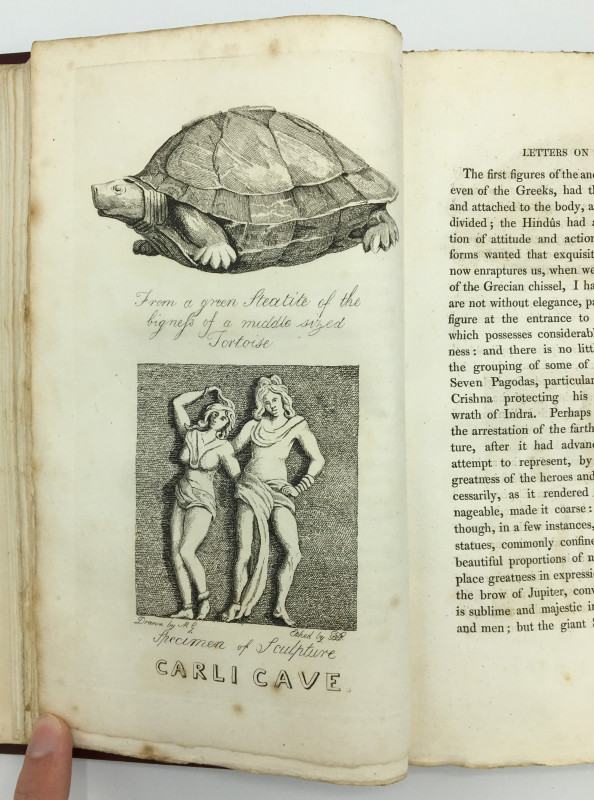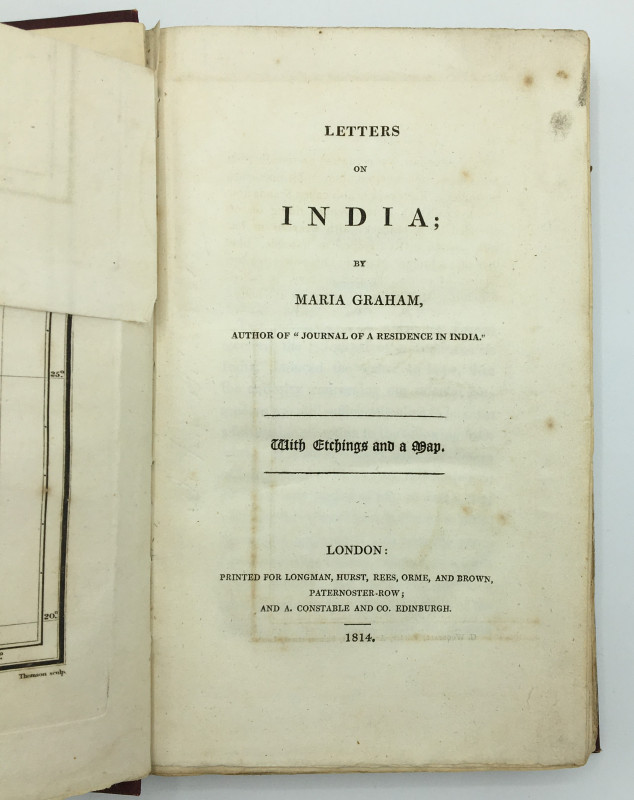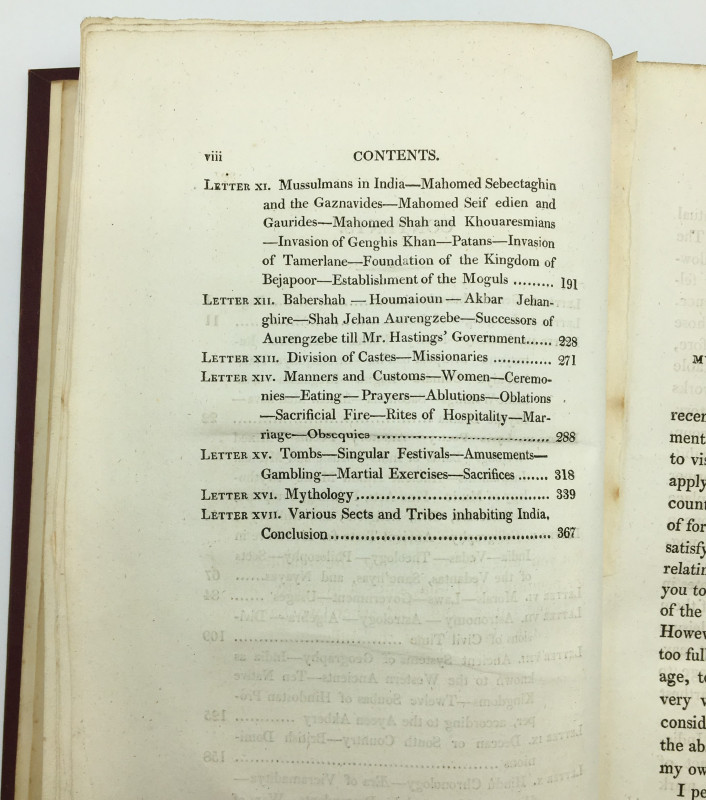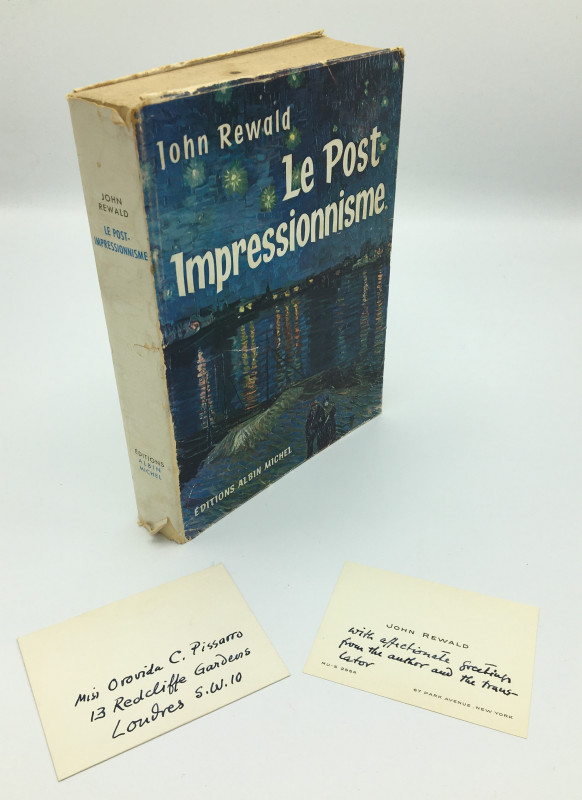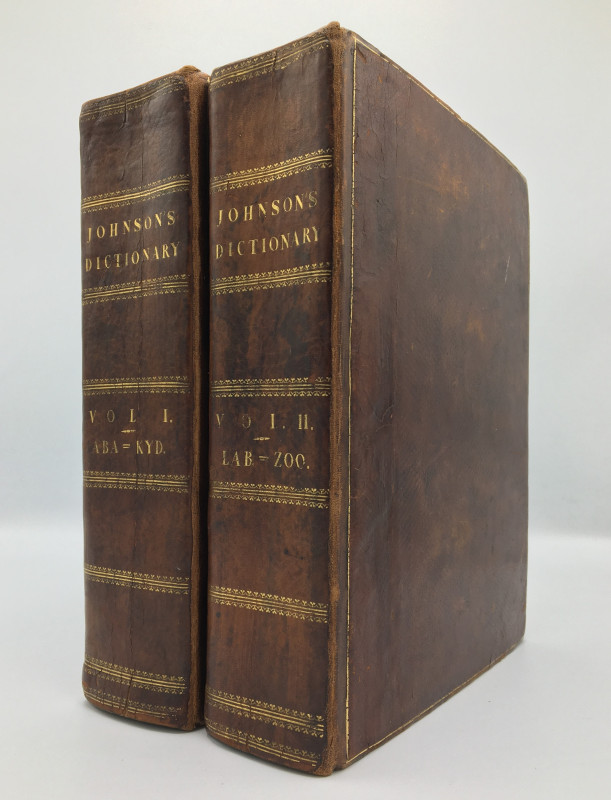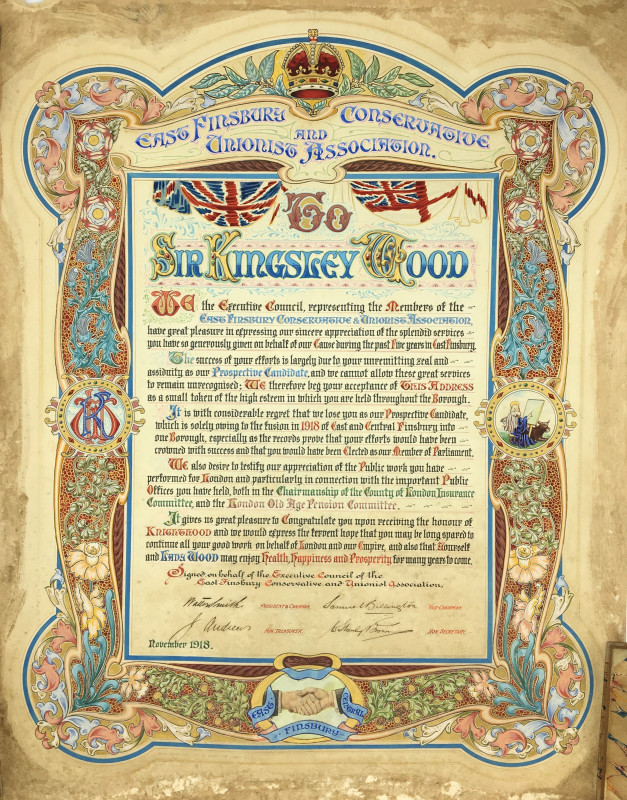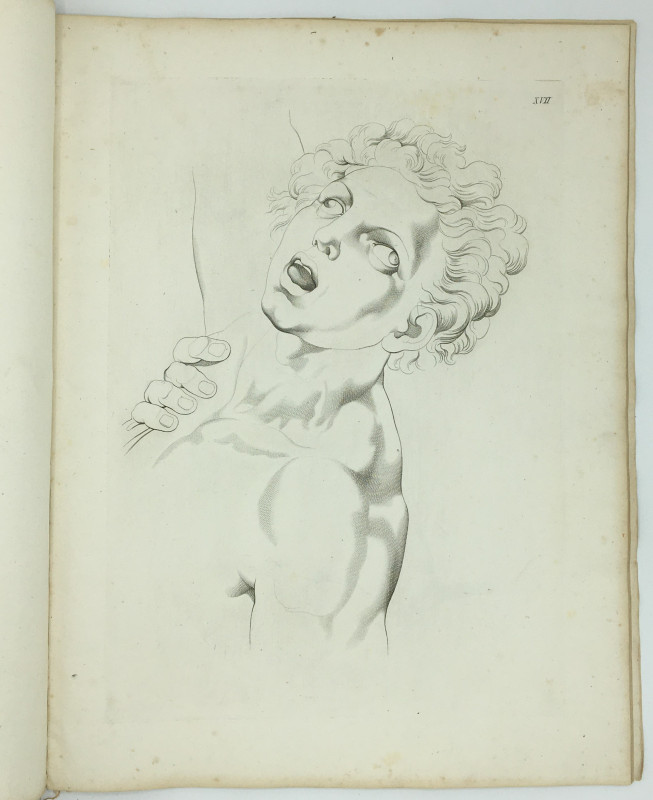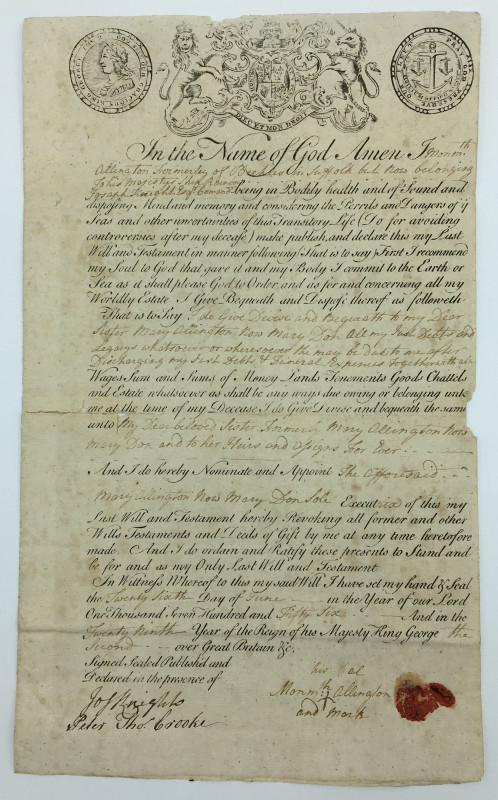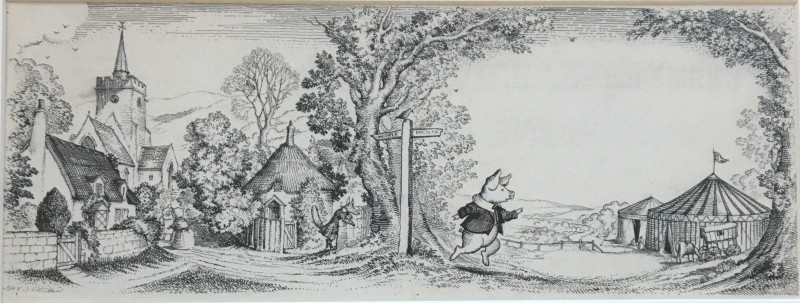LETTERS ON INDIA
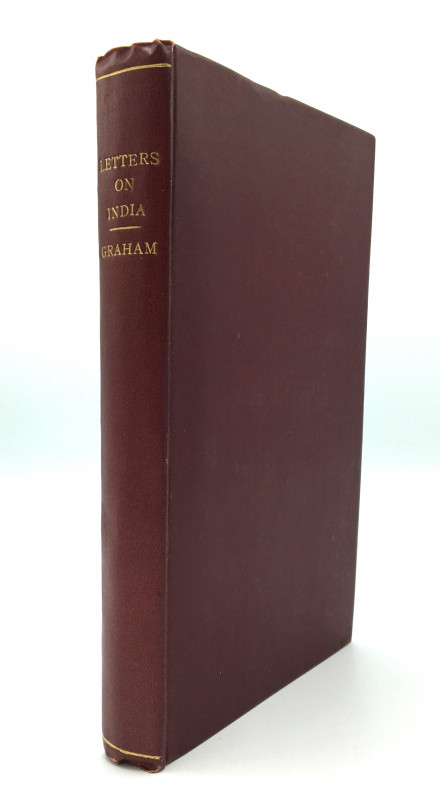




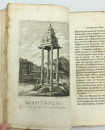


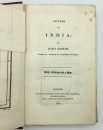


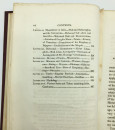
Book Description
First edition. Octavo. Early twentieth-century maroon cloth with titles in gilt to the spine. Page edges untrimmed. Illustrated with a folding engraved map frontispiece and nine etched plates, one being a map, from drawings by the author. Errata page following the text at the rear. Previous owner’s bookplate (”McClure / Inverness”) to the front pastedown. A very good copy, the binding square and firm with just a touch of minor shelf wear to the extremities. The contents with toning to the endpapers, minor old neat paper repairs to the blank margins of five text pages, and some occasional light foxing (more so to some of the plates) are otherwise in very good order throughout. An attractive untrimmed copy.
Dealer Notes
Maria Graham, later Lady Callcott (née Dundas; 1785-1842), was born into a Scottish naval family and spent much of her early life in the north-west of England whilst her father was stationed overseas, predominantly in the Caribbean. In 1808, at the age of 23, Maria accompanied her father to his new posting in Bombay. En-route she fell in love with a young naval officer, Thomas Graham, marrying him in India in 1809. Upon the couple’s return to England in 1811, Graham published her first book, Journal of a Residence in India (1812), documenting her experiences of the country.
The present work, which Graham also illustrates, forms her second account of her travels in India, with a particular focus on its culture, customs and religion. Taking the form of a series of letters, she explains that the work was “written solely with the design of being useful to such as are called upon to go at an early period of life, to India, and cannot have had time to make themselves acquainted with even the general outline of the history, religion, or science of that country” (Preface).
A successful author and an accomplished illustrator, Graham went on to write a number of other travel works describing the periods that she spent living in Italy, Chile (where she arrived a widow, her husband having died en route, and subsequently lived alone for a year amongst the Chilean population), and Brazil (where she later returned to serve as tutor to the Brazilian princess). Notably, her account of the Valparaíso earthquake in Chile put her at the centre of a heated contemporary scientific debate, and led to her authoring the first paper written by a woman to be published in the Transactions of the Geological Society of London. She was also later commissioned by her publisher, John Murray, to write one of the best-known accounts of the famous voyage of the HMS Blonde to Hawai’i in 1825, as well as works on the history and art of Spain and her first, and most famous, children’s book Little Arthur’s History of England, which remained in print until 1975.
An uncommon title by this pioneering female traveller, author and artist.
The present work, which Graham also illustrates, forms her second account of her travels in India, with a particular focus on its culture, customs and religion. Taking the form of a series of letters, she explains that the work was “written solely with the design of being useful to such as are called upon to go at an early period of life, to India, and cannot have had time to make themselves acquainted with even the general outline of the history, religion, or science of that country” (Preface).
A successful author and an accomplished illustrator, Graham went on to write a number of other travel works describing the periods that she spent living in Italy, Chile (where she arrived a widow, her husband having died en route, and subsequently lived alone for a year amongst the Chilean population), and Brazil (where she later returned to serve as tutor to the Brazilian princess). Notably, her account of the Valparaíso earthquake in Chile put her at the centre of a heated contemporary scientific debate, and led to her authoring the first paper written by a woman to be published in the Transactions of the Geological Society of London. She was also later commissioned by her publisher, John Murray, to write one of the best-known accounts of the famous voyage of the HMS Blonde to Hawai’i in 1825, as well as works on the history and art of Spain and her first, and most famous, children’s book Little Arthur’s History of England, which remained in print until 1975.
An uncommon title by this pioneering female traveller, author and artist.
Author
GRAHAM, Maria:
Date
1814
Publisher
London: Longman, Hurst, Rees, Orme, and Brown.
Friends of the PBFA
For £10 get free entry to our fairs, updates from the PBFA and more.
Please email info@pbfa.org for more information
